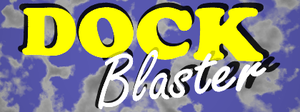DOCK Blaster: Difference between revisions
mNo edit summary |
mNo edit summary |
||
| Line 1: | Line 1: | ||
[[Image:Dblogo.png|thumb|right|DOCK Blaster]] | [[Image:Dblogo.png|thumb|right|DOCK Blaster]] | ||
DOCK Blaster is a free-to-use service for running docking screens, on the web at [http://blaster.docking.org http://blaster.docking.org]. **DOCK Blaster is currently in beta test, so you should contact John Irwin for access until it becomes public** | DOCK Blaster is a free-to-use service for running docking screens, on the web at [http://blaster.docking.org http://blaster.docking.org]. **DOCK Blaster is currently in beta test, so you should contact John Irwin for access until it becomes public** | ||
To use DOCK Blaster you will need the structure of a protein target and an indication of the binding site you wish to target. | |||
There are two ways to do this: | |||
* If your target is in the PDB, you may simply specify the PDB code, in the [http://blaster.docking.org/parser.shtml Parser]. | |||
* If your target is not in the PDB, or you edited a PDB file, use the [http://blaster.docking.org/start.shtml Preparer]. | |||
** Upload the target in PDB format (preferred) or mol2 format | |||
** Specify the binding site using | |||
*** a docked ligand in mol2 format (preferred) or | |||
*** "hot spots", in PDB format | |||
*** atoms of residues forming the binding site, the center of inertia of which be where you expect the ligand to go. | |||
{{TOCright}} | |||
If you | If you do not have a particular target in mind and are simply curious about DOCK Blaster, you may select "I'm feeling lucky", and we will pick a target for you from the PDB. To try one of the examples featured in our (forthcoming) DOCK Blaster paper, consult the [[DOCK Blaster:Sample_Data | sample data]]. | ||
To learn more | To learn more please consult the topics below. | ||
== Before you get started == | == Before you get started == | ||
Revision as of 18:25, 12 February 2009
DOCK Blaster is a free-to-use service for running docking screens, on the web at http://blaster.docking.org. **DOCK Blaster is currently in beta test, so you should contact John Irwin for access until it becomes public**
To use DOCK Blaster you will need the structure of a protein target and an indication of the binding site you wish to target. There are two ways to do this:
- If your target is in the PDB, you may simply specify the PDB code, in the Parser.
- If your target is not in the PDB, or you edited a PDB file, use the Preparer.
- Upload the target in PDB format (preferred) or mol2 format
- Specify the binding site using
- a docked ligand in mol2 format (preferred) or
- "hot spots", in PDB format
- atoms of residues forming the binding site, the center of inertia of which be where you expect the ligand to go.
If you do not have a particular target in mind and are simply curious about DOCK Blaster, you may select "I'm feeling lucky", and we will pick a target for you from the PDB. To try one of the examples featured in our (forthcoming) DOCK Blaster paper, consult the sample data.
To learn more please consult the topics below.
Before you get started
Preparation and Docking
Understanding the Results
Other information
To cite DOCK Blaster, please reference Huang, Shoichet, Irwin, "Benchmarking Sets for Molecular Docking", J Med Chem 2006, 49(23), 6789-6801
For help with DOCK Blaster, please join and write to the DOCK Blaster mailing lists [1]. We welcome your feedback about DOCK Blaster. Please send bug reports to support at docking.org. Please send opinions to comments at docking.org.
